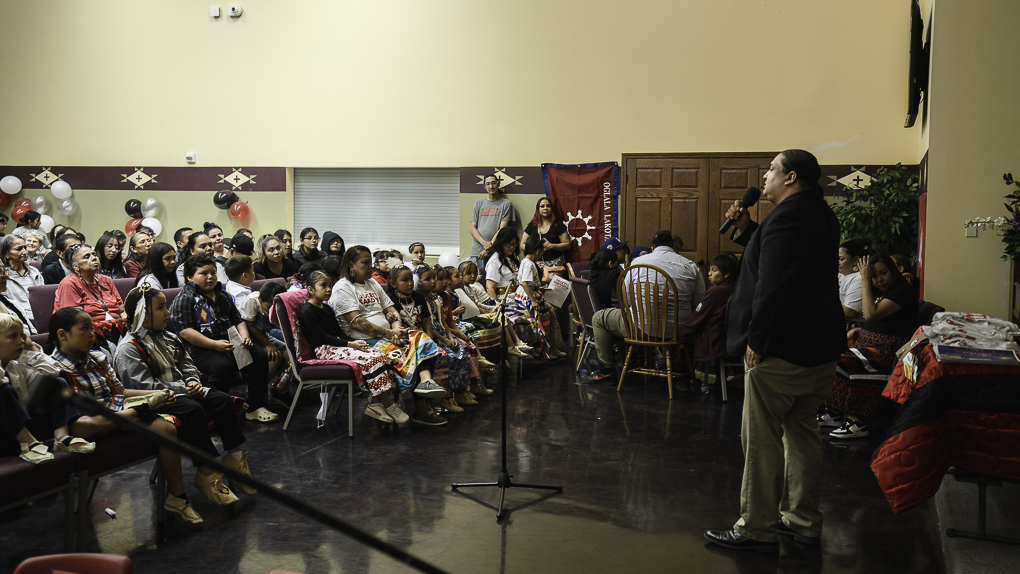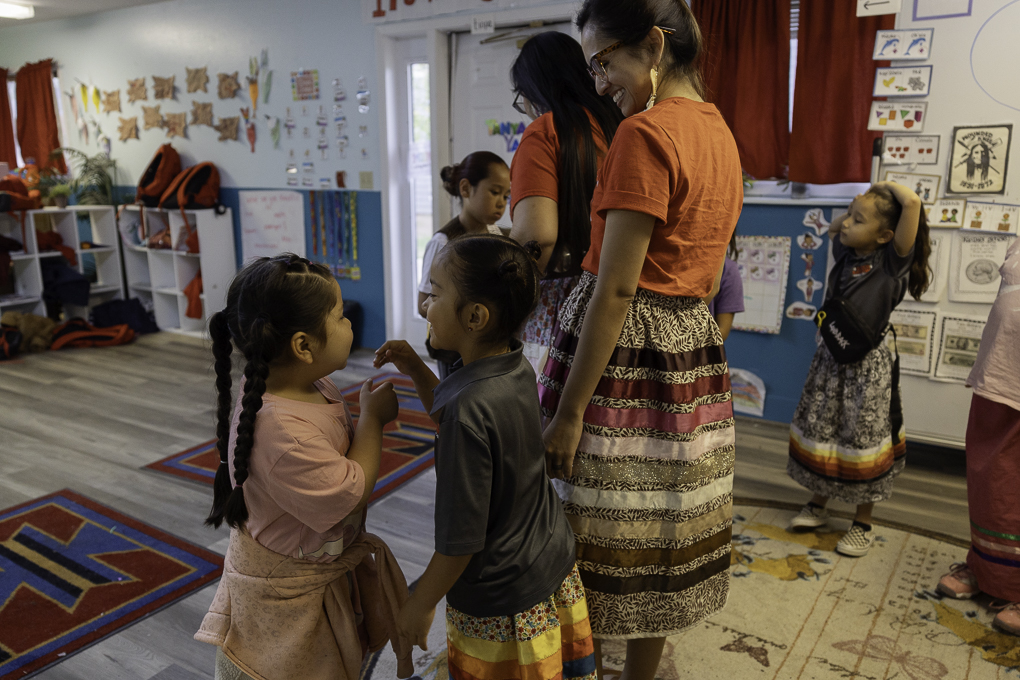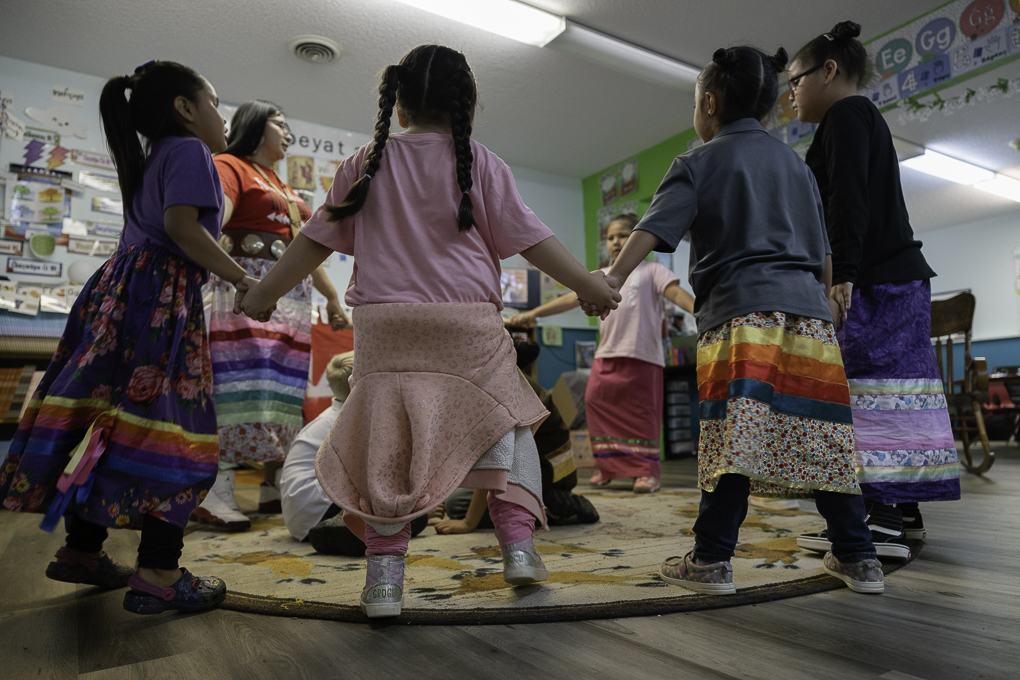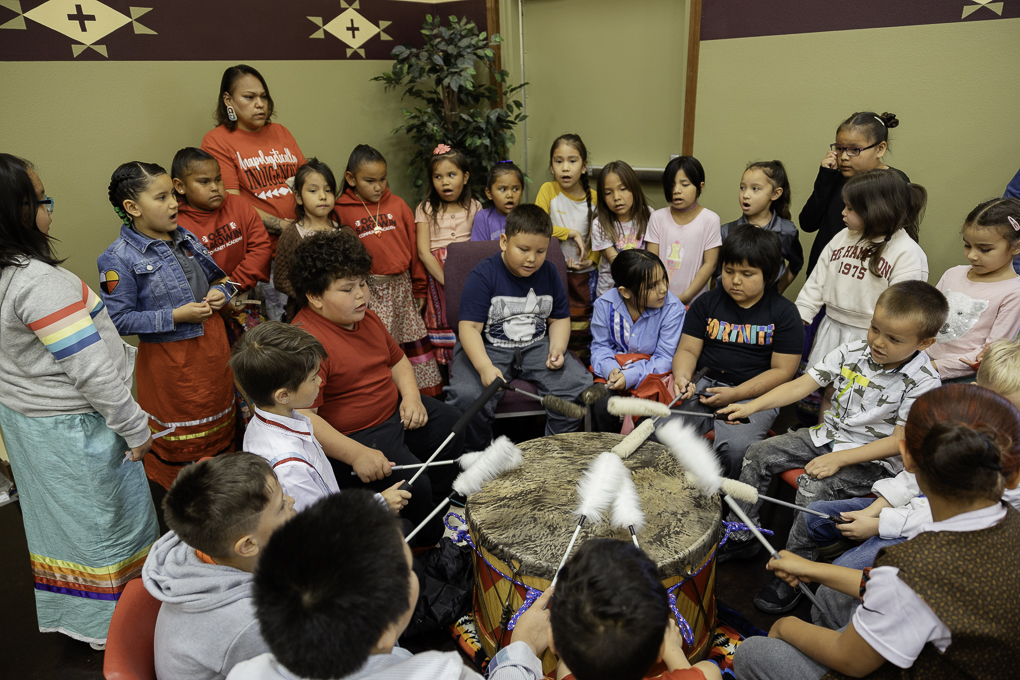This blog is part of our NDN Impact Stories, a series dedicated to sharing the impacts of our partners, grantees, and loan relatives in their home communities. The Oceti Sakowin Community Academy was developed in partnership with NACA Native Inspired Schools Network and NDN Collective.
Content Advisory: Boarding schools and their impact on Indigenous communities are mentioned in this article.
When you walk through the doors of the Oceti Sakowin Community Academy (OSCA), you are greeted as a relative.
The school opened its doors to kindergarten students in the fall of 2022. It is the first of its kind, built on a foundation of Lakota language, culture, and philosophy. Everything that students learn – math, reading, writing – is taught through and with the traditional language of the Oceti Sakowin, giving its students an education that centers their identities.
OSCA was developed over several years by tribal and community leaders, educators, students, and parents. The basis for the school is to address the need for culturally relevant curriculum, language and culture revitalization, and to provide the future leaders of the Oceti Sakowin with a strong foundation of who they are.
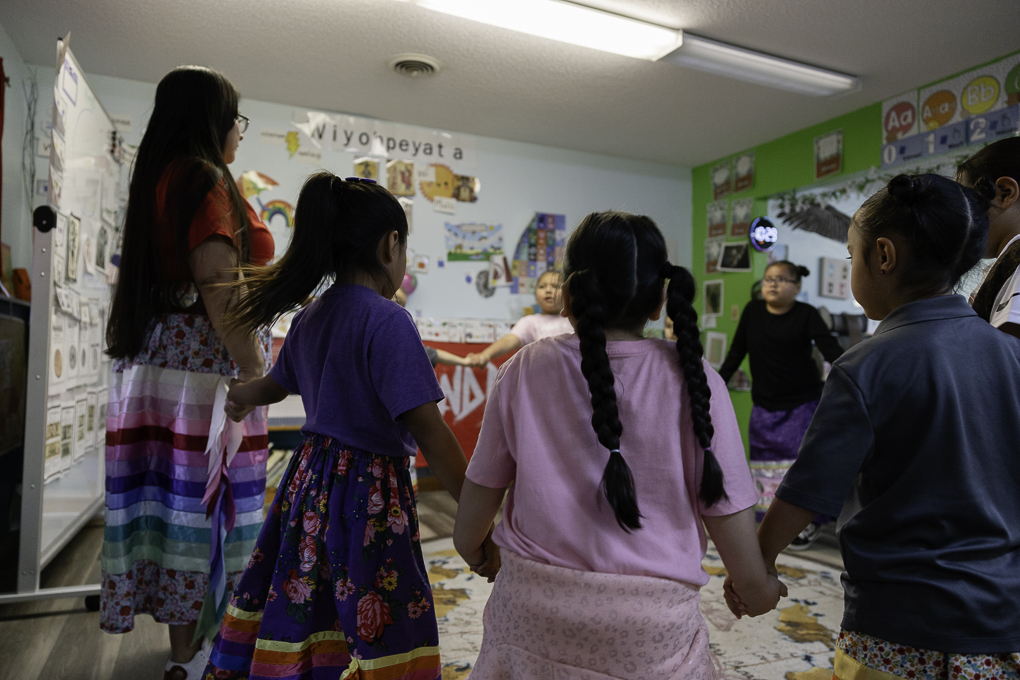
“My experience in school was that I’ve never seen my people in what we were learning – and when we did, it was in a negative context,” said Mary Bowman, Head of School (or Unci) of OSCA. “What public school is telling us is that we need to be white because it’s white history, if you want to do well, you need to be white. That’s painful and that’s traumatic. Our students need to learn about who our people are, because our people are amazing.”
Part of the work of OSCA is to address discrimination and achievement gaps between Indigenous and non-Indigenous students in Rapid City, SD. Recently, following an investigation by the US Department of Education, Rapid City Area Schools entered into a resolution agreement to address concerns of discrimination against Native American students in regards to discipline as well as access to the district’s Advanced Placement courses.
“These students will grow up to be the future leaders of our next generation. The school provides safety, security, and a positive school environment for our youth.”
Robby Burroughs, Managing Director of NDN Holdings
Rapid City Area Schools serve approximately 14,000 students, a quarter of whom are Indigenous. Despite Indigenous youth making up a large portion of the student body, only around one percent of teachers are Indigenous. For the 2022-23 school year, RCAS’ District Report Card stated that Indigenous students had only a 49.5% high school completion rate, compared to 91% completion for white students.
Students in South Dakota also deal with a large police presence on school campuses across the state. During the 2015-16 school year, the ACLU of South Dakota reported 51% of students attended schools with police officers or “School Resource Officers” present. This same report found that South Dakota ranks 13th in the nation for student arrest rates, with Indigenous students being 7.9 times more likely to be arrested than white students.
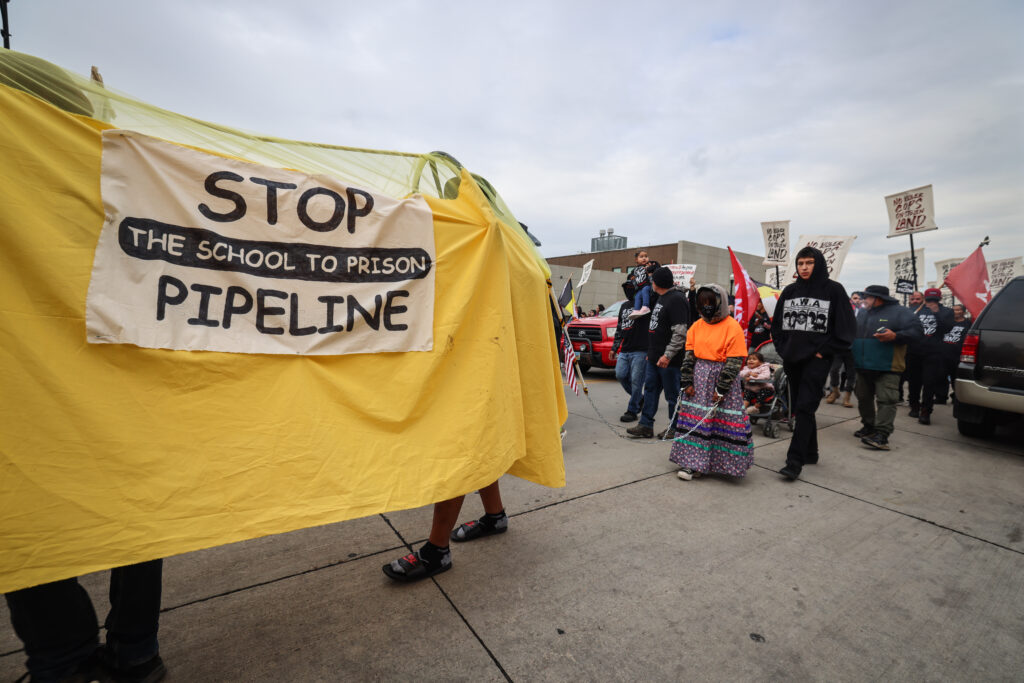
The intention behind OSCA was to address these issues and create a space where Indigenous students felt safe to learn and be themselves.
“We know when we have culturally responsive pedagogy and lessons that represent them, Indigenous kids are going to be more engaged,” Mary said. “And more importantly they’re going to have a strong cultural identity, and that strong cultural identity will carry them so far in life.”
In each interaction between students and teachers, Lakota teachings are present. Students don’t call their teachers ‘Miss’ or ‘Mrs.’ – they call them Tȟuŋwíŋ which means auntie. Teachers call students tȟožáŋ/tȟošká which means niece and nephew. Mary is called Uŋčí which means grandma, and she calls her students her tȟakóža (grandchildren).
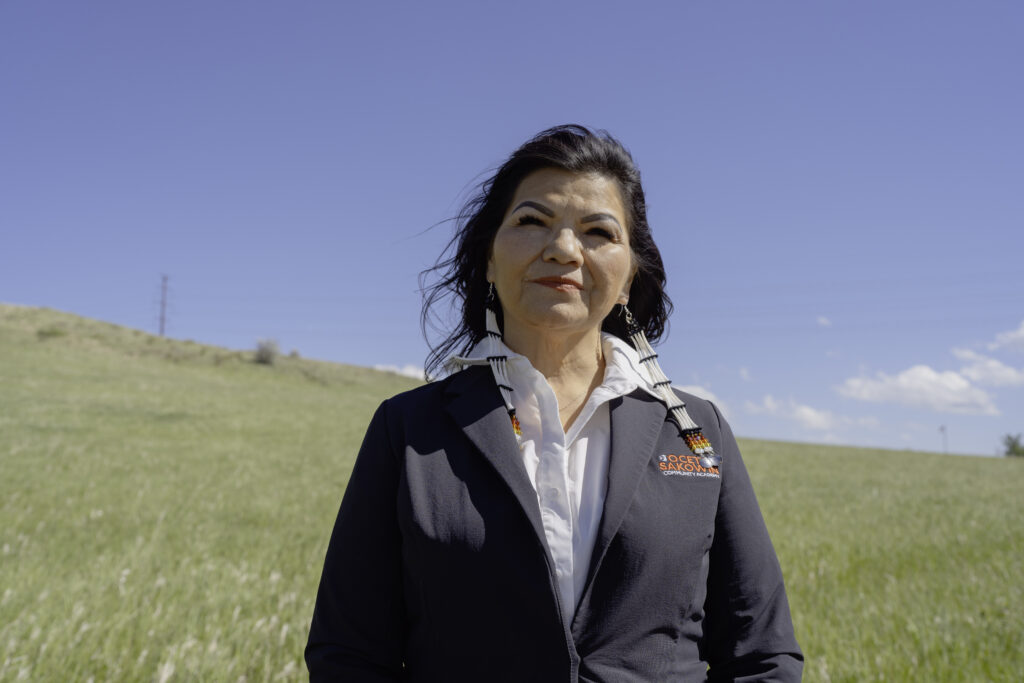
“The foundation of what we do when it comes to relationship building is Wotakuye – our deep kinship belief,” Mary said. “We have that belief of and conversations about being a good relative. That’s our only rule here: be a good relative.”
This reference to Wotakuye (kinship/family) is built into the culture of the school. Students are able to learn who they are in relation to one another and their teachers, as well as through the interconnectedness to everything including the land, plants, and animals. The school community is taught to treat one another kindly and respectfully – here is a collective understanding that being a good relative to all beings is something to strive for every day.
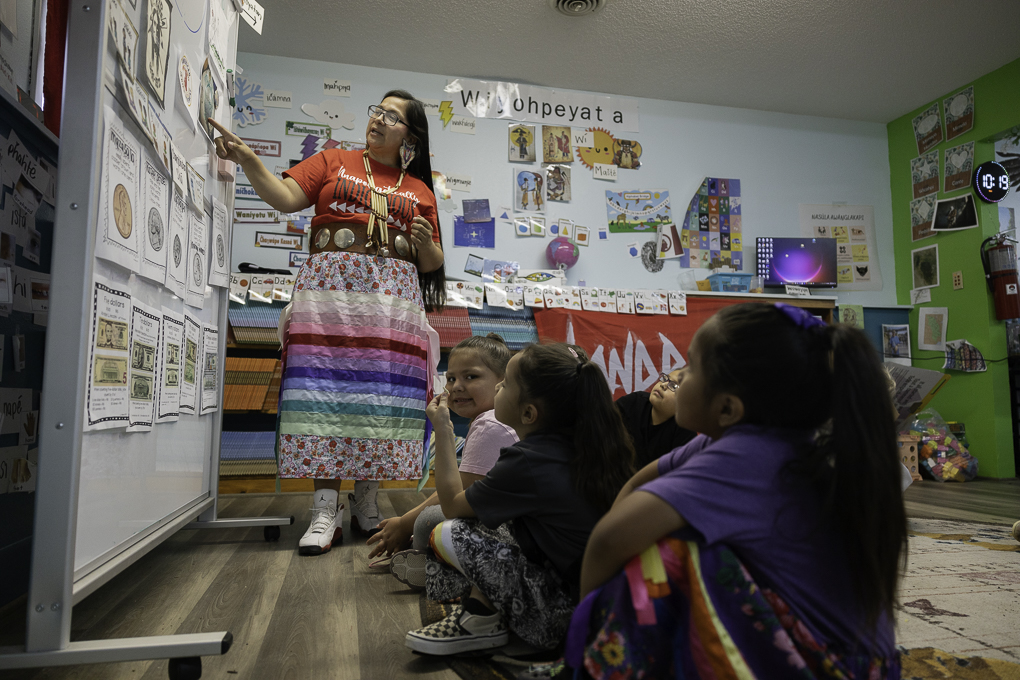
When designing OSCA, Mary and others established four core principles for the school: wačhaŋtognake (generosity), wóksape (wisdom), wóohitike (bravery), and wówačhiŋtȟaŋka (fortitude). These values are part of the Woope Sakowin or seven virtues of Lakota people. The four principles for the school were chosen by OSCA, NDN Collective, and NACA Inspired Schools Network, and are demonstrated in all areas of the school. The four core principles also built upon the Oceti Sakowin essential understandings that were adopted by the South Dakota Board of Education in 2018.
The seven Essential Understandings include many things like land & environment, culture, language, oral tradition, and sovereignty. These understandings are rooted in the Seven Council Fires of the Lakota, Dakota, and Nakota people and were developed for public education by teachers, students, parents and tribal members from across the state of South Dakota with the goal to “provide compatibility to the South Dakota social studies standards.”
The expectation of adopting these standards across public schools in South Dakota was to better teach students about the tribes and histories of the first peoples of this land. However, there was little oversight on enforcing these standards in the classroom.
“What public school is telling us is that we need to be white because it’s white history, if you want to do well, you need to be white. That’s painful and that’s traumatic. Our students need to learn about who our people are, because our people are amazing.”
Mary Bowman, Head of School for the Oceti Sakowin Community Academy
When developing the curriculum at OSCA, the elements of wačhaŋtognake, wóksape, wóohitike, and wówačhiŋtȟaŋka were used as a foundation for subjects like math, reading, and writing. These principles as well as the Essential Understandings are present within every lesson taught at OSCA, no matter the topic.
Centering these core values is part of the goal to change the narrative of Indigenous people that is taught to students in most US history classes. The often inaccurate and racist lessons are based on a white perspective and glorify the impacts of colonization. Mary’s goal for Indigenous students is to give them a strong cultural understanding of their history and people; to correct the story and provide students with a foundation to understand what really happened to their people.

“The narrative is that the colonizers came and saved us and that’s just not true. We had everything we needed, we were a strong, thriving nation before colonization. It’s important for non-Native people to know that too, that narrative needs to change,” Mary said.
The first year of OSCA was housed in the basement of St. Andrew’s Episcopal Church in Rapid City . The choice to house the school in a church was not taken lightly, based on Indigenous Peoples’ relationship with boarding schools that were often led by churches. After many intentional conversations, the decision was made to move forward to temporarily house OSCA at St. Andrews until another space could be found.
Each day, OSCA students would start with a morning circle on the grassy area outside their first classroom to pray, share how they were feeling, and sing songs.
“It’s important that students have a sense of belonging and connection to traditional teachings. The best days for our Indigenous youth are ahead of us – Oceti Sakowin Community Academy is proof of that.”
Robby Burroughs, Managing Director of NDN Holdings
From their circle outside the church, the group could see the top of a building on the hill. Just up the road from where the students stood is the campus that was once the Rapid City Indian School, a boarding school that many from their tribe had attended before its closing in 1935. Now a hospital, some of the old buildings still stand.
Mary would notice the building from time to time during their morning circle and felt the sad reality of boarding schools’ impacts were not lost on her. However, in those moments she also thought of the power she shared with her students and teachers every day. These little children were getting to learn the culture and language that had been stolen from their parents and grandparents – just a half mile from where the theft occurred.
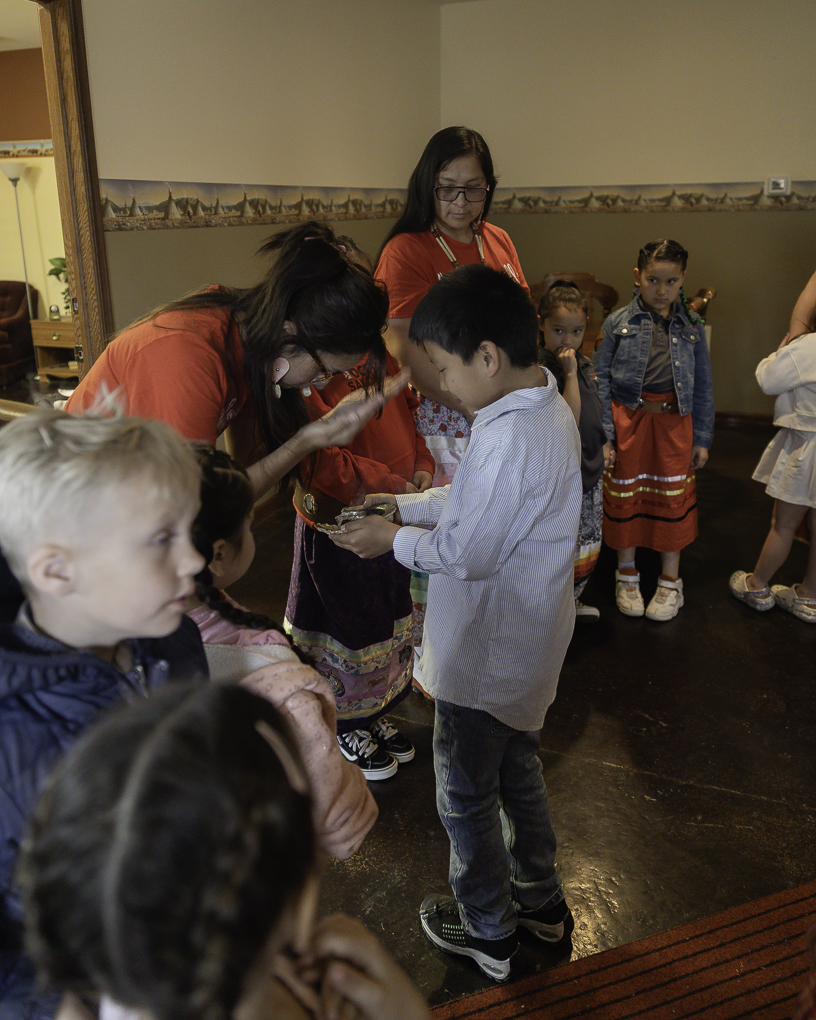
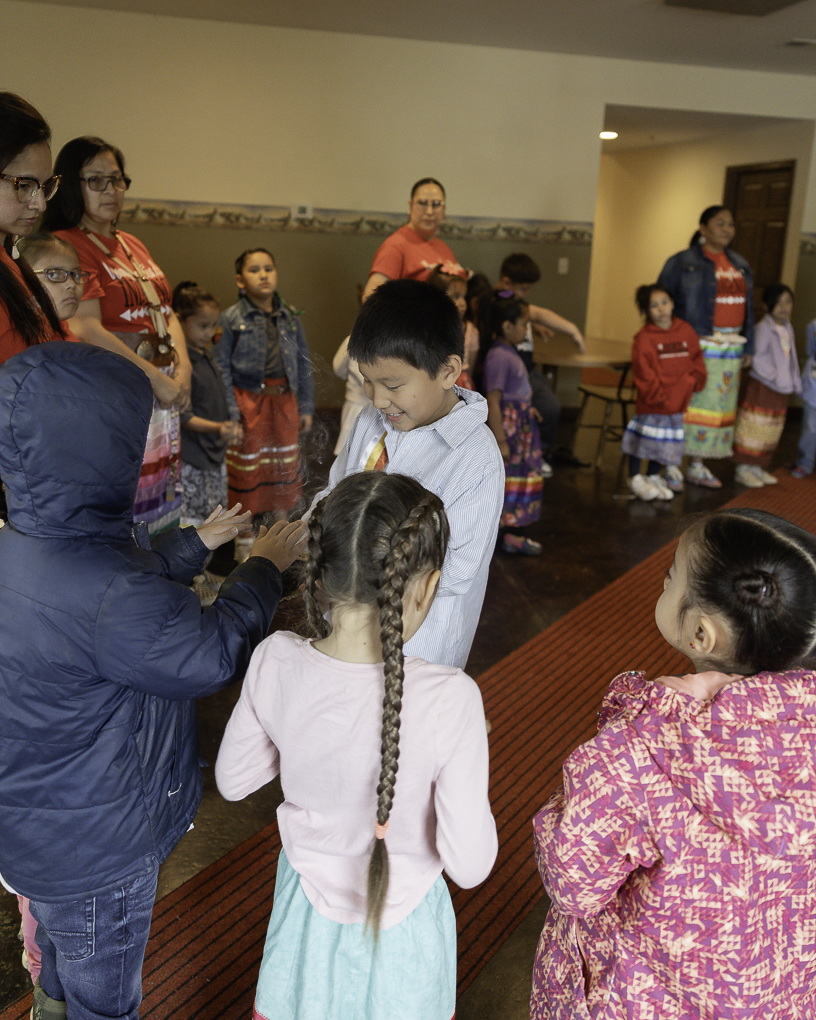
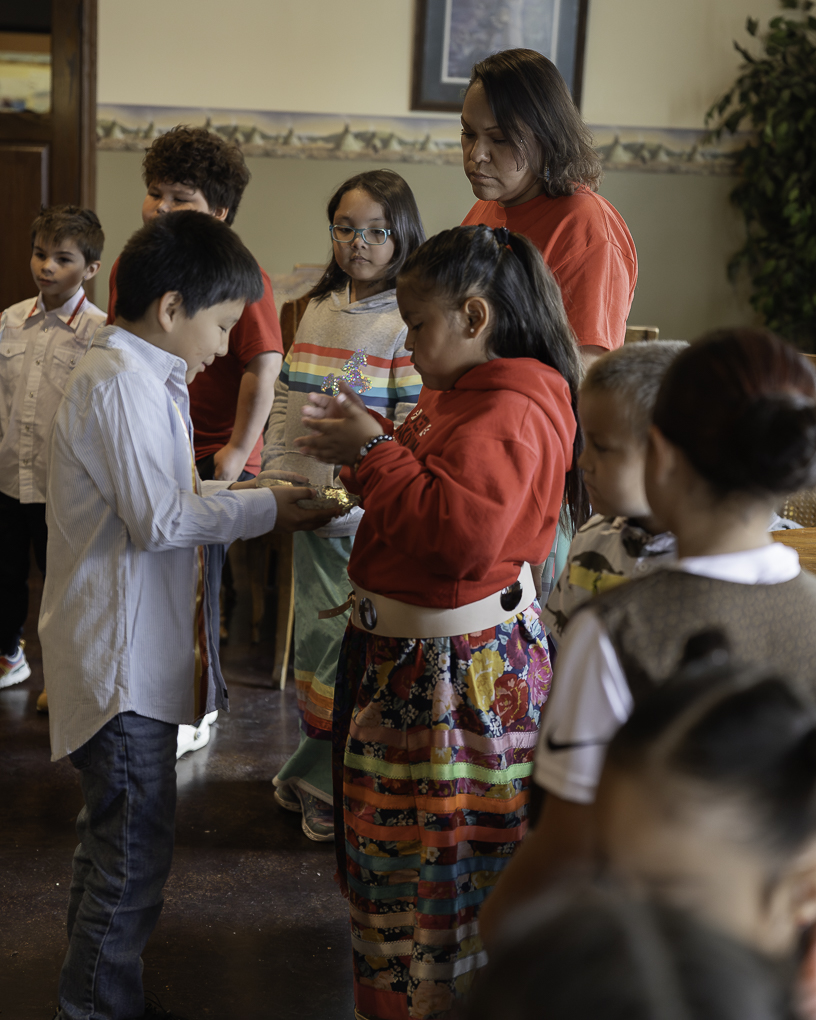
Many in Indian Country are aware of the impact boarding schools had on our communities. The taking of children to schools that were sometimes thousands of miles away from their homelands had catastrophic consequences for the children, families, and Nations that experienced it. Government-funded and church-run boarding schools were the sites of rampant physical, psychological, and sexual abuse, and many students died there, often with no notice going to the family.
The goal of boarding schools was to assimilate Indigenous people into white, western society starting with the children. At school, children were stripped of their traditional clothing, forced to cut their hair, and forbidden to speak their language. At the same time, on reservations, traditional ways of life had come under attack and were criminalized by the US government. Those who practiced ceremonies, song or dance, were arrested and even killed.
As a result of this assault on Indigenous ways of life and language, many people in Indigenous communities do not speak their language and did not pass traditional teachings on to their children – as a way to ensure their survival in American society.
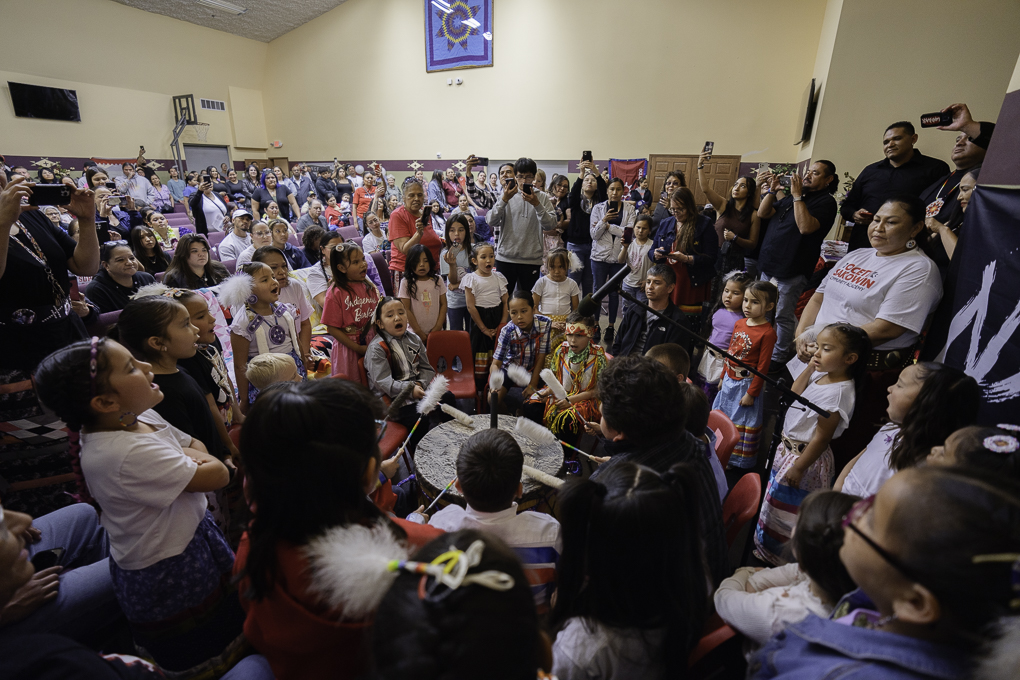
Amidst this history, one of the many great things that comes from the Oceti Sakowin Community Academy is the healing. During parent teacher conferences Mary is often told stories of how her students are taking what they are learning in school home and sharing it with their parents and grandparents.
Students go home speaking Lakota and telling traditional stories or singing prayer songs. Parents have told teachers at OSCA that as a result of their child learning these practices, they are also provided an opportunity to reconnect with their cultural ways alongside their children.
This result is one of the pillars of OSCA’s and NDN Collective’s foundations: decolonization. The goal of both organizations is to decolonize Indigenous communities and return our people back to their traditional ways of knowing. Lakota children learning to speak their language, understand their culture, and bringing these teachings home to their families, are demonstrations of decolonization in real time – are slowly beginning to heal the intergenerational wounds caused by atrocities like boarding school.

One of OSCA’s founding partners was NDN Holdings, LLC, which is owned by NDN Collective and provides community development and social enterprise planning for Indigenous communities. NDN Holdings helps NDN Collective, tribes, and other Indigenous-led organizations with things like asset, power, and capacity building, real estate development, and affordable housing projects.
“When it came to the school, NDN Holdings acted as a thought partner to support Mary and others in the planning phase,” said Robby Burroughs, NDN Holdings Managing Director.
NDN Holdings dealt with the legal framework for the school, coordinated contracts with engineers, architects, and the city, as well as supported overall development planning. By having NDN Holdings as a partner to carry these legal and technical responsibilities, those working on building out the school could focus on curriculum development and the education itself.
“They’re going to have a strong cultural identity, and that strong cultural identity will carry them so far in life.”
Mary Bowmen, Oceti Sakowin Community Academy
The first few years of OSCA have been held in temporary spaces, but NDN Collective secured property in north Rapid City that will be the site of a new school building. In addition to OSCA’s new campus, the 70-acre area will include other projects like affordable housing units and storefronts for local businesses. The school itself has already been designed, and infrastructure development is currently underway.
The values of the community and school were incorporated into the design of the building, with OSCA’s new campus featuring walking trails, an arbor for ceremonies and gatherings, and space for a community garden.
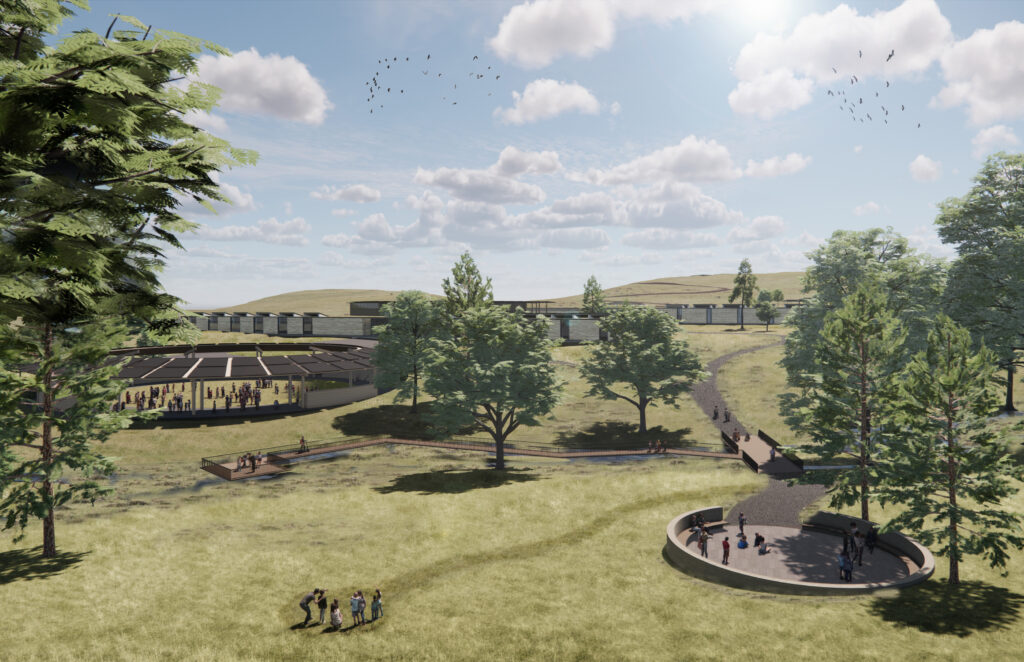
“We want this to be Indigenous-centered based on traditions. The outdoor environment was a big part of that– we wanted to make sure there were plenty of outdoor learning opportunities,” Robby said. “With the educational component, this is telling our stories and being able to share Lakota traditional teachings. It’s not just the physical piece of land, it’s Natives getting visualized and getting represented in this way.”
From the design of the new school to the lessons in the classroom and the songs shared by students at home, Oceti Sakowin Community Academy is a reclamation of Indigenous life, a return to our language, land, and culture.
“In the most literal sense, this school is on Indigenous land, owned by an Indigenous organization that will eventually be owned by an Indigenous school. So in that aspect, it’s definitely LANDBACK,” Robby said.
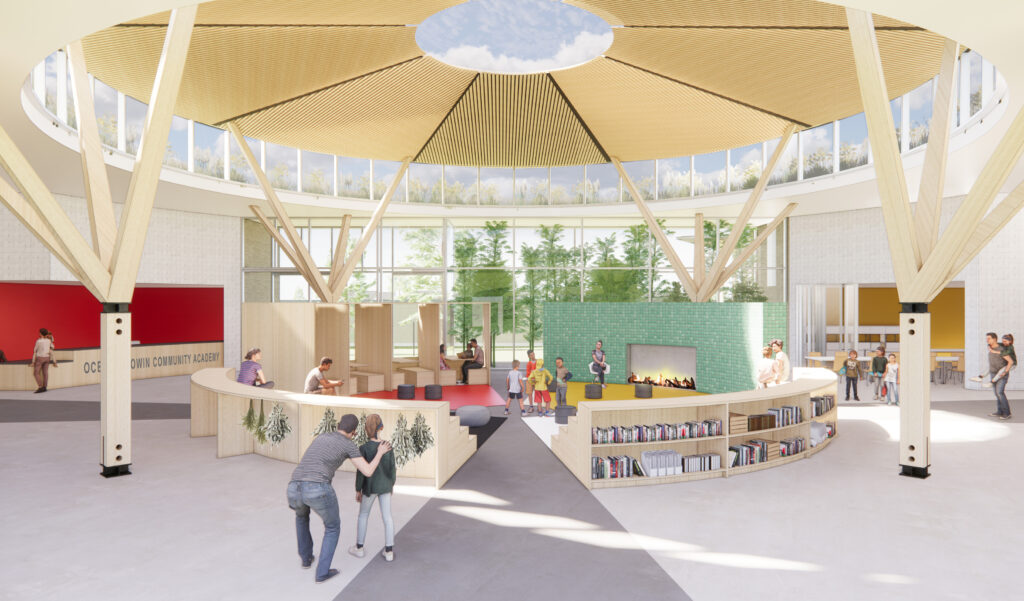
Other communities have reached out to Robby for guidance on starting schools like OSCA. As part of the NACA Native Inspired Schools Network, OSCA serves as a model for others on how to create Indigenous-led and centered curriculum for students.
“This school’s purpose is to create new models of Indigenous education,” said Nick Tilsen, NDN Collective President & CEO. “OSCA is about creating leaders who have a sense of identity, who have a sense of purpose, who know where they are, who know where they come from.”
The hope for Oceti Sakowin Community Academy is to be a catalyst for change, so its students can lead their communities into the future with a strong foundation of knowledge surrounding themselves and their people.
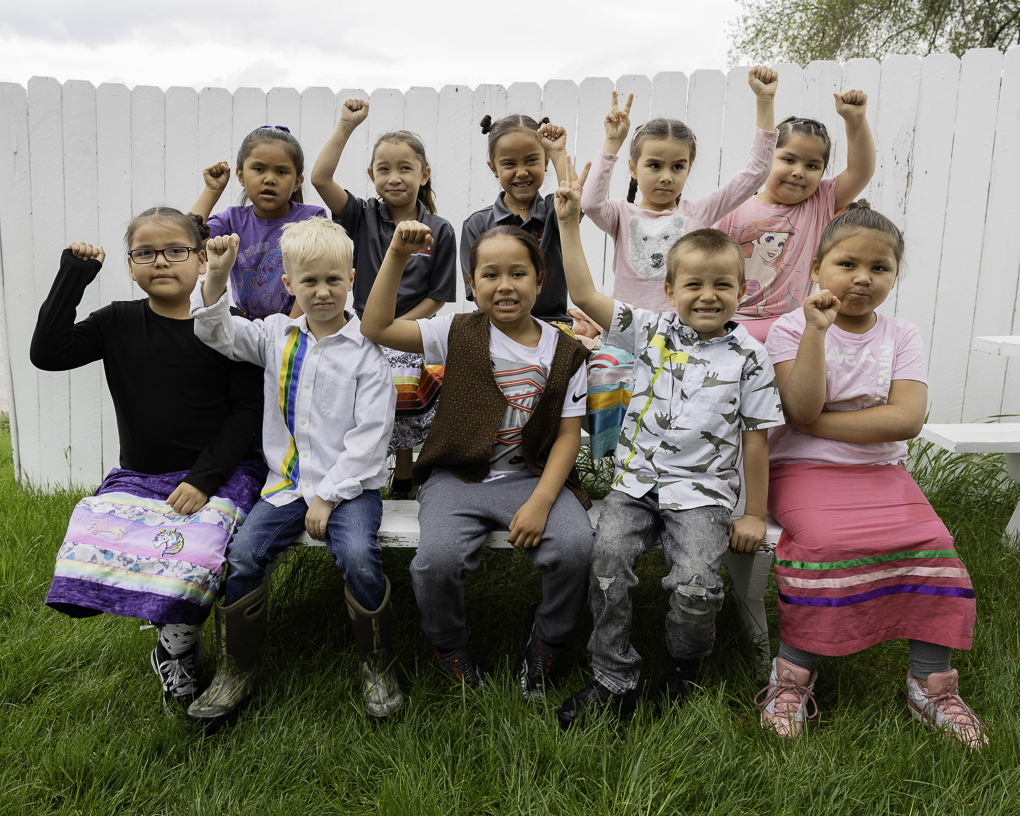
“I am so grateful for this opportunity to work with these students and to revitalize our language and our culture,” Mary said. “I have the best job in the world. Every day, I get to hear our children singing our songs and speaking our language, on our own lands.”
While grateful to see the revitalization of Lakota language, culture, and identity, leaders of OSCA also look forward to the futures of these children and the change they will make in the world.
“These students will grow up to be the future leaders of our next generation. The school provides safety, security, and a positive school environment for our youth,” Robby said. “It’s important that students have a sense of belonging and connection to traditional teachings. The best days for our Indigenous youth are ahead of us– Oceti Sakowin Community Academy is proof of that.”
More Photos from the Oceti Sakowin Community Academy
Photos by Angel White Eyes, NDN Collective Photo Editor


